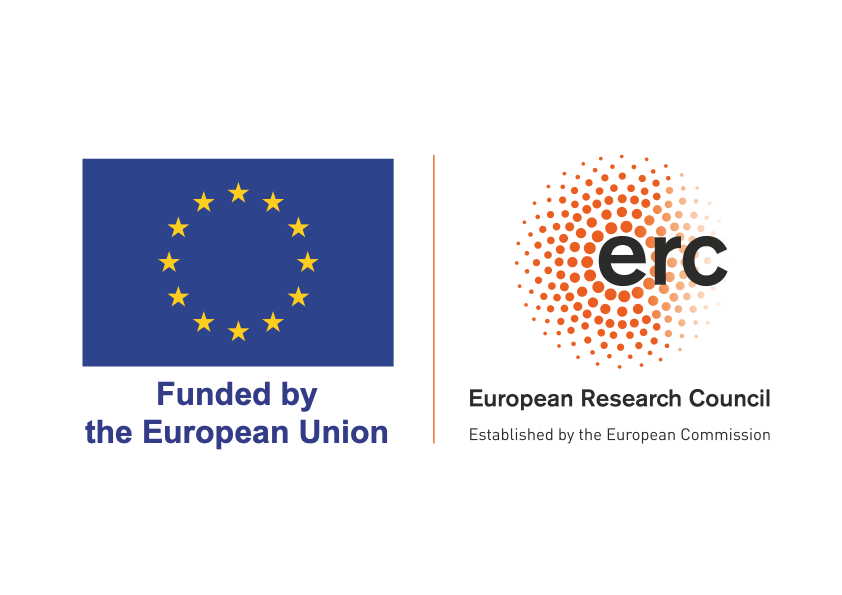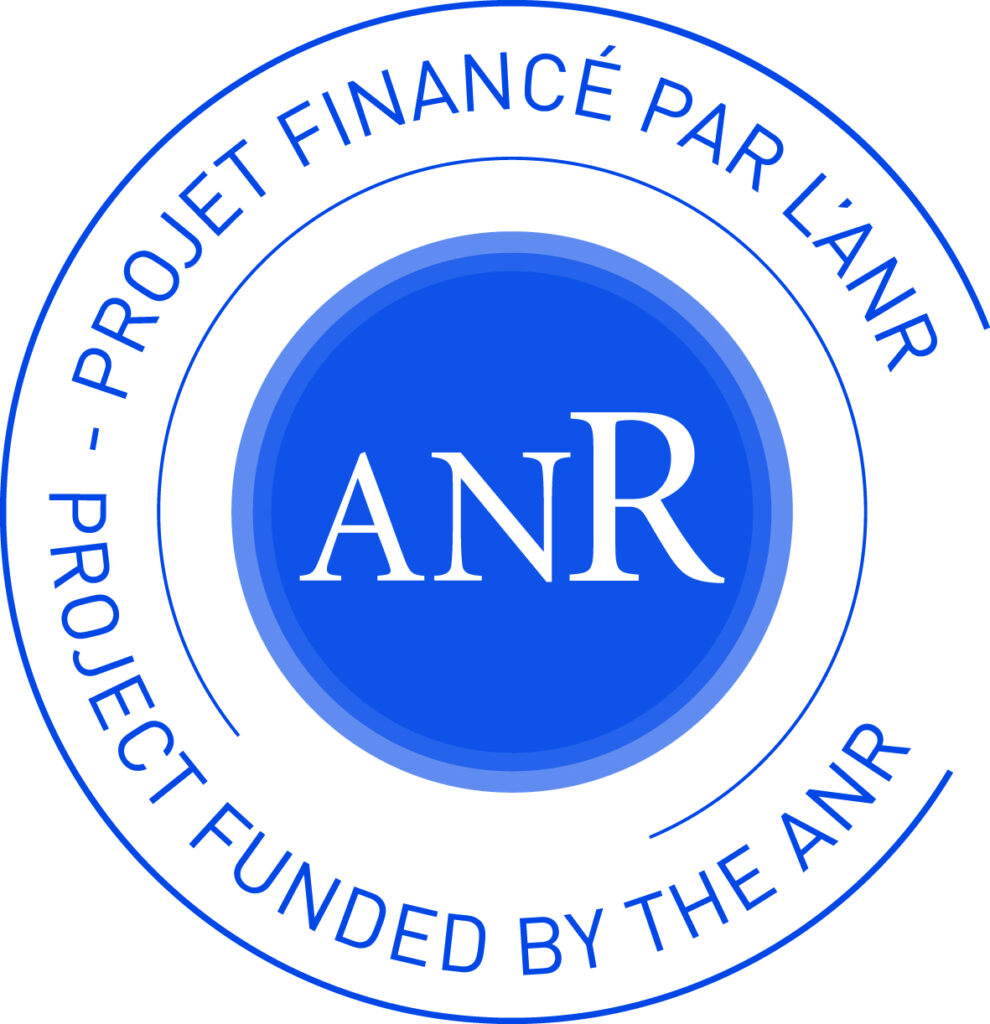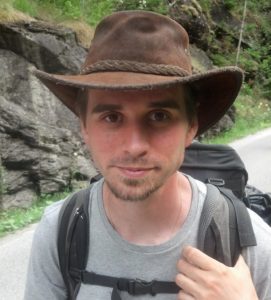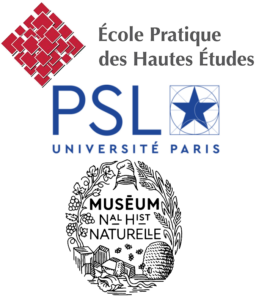General interests
Genetics of adaptation
One of my main interests is the study of the adaptive mechanisms through which wild populations respond to selective pressures. This requires studying these selective pressures, but also the genetic bases of phenotypic traits, as well as their phenotypic plasticity. The main questions are:
- What are the selective factors impacting the population? Which traits are adaptive, i.e. subjected to those selective factors?
- What are the genetic bases of these adaptive traits? This question can be answered without (heritability, genetic correlation between traits) or with genomics (genetic architecture of the traits).
- What is the adaptive potential in the population? How is it expected to respond to selection on the long run?
- What are the phenotypic traits that are involved in the response of population to climate change and what are the mechanisms involved?
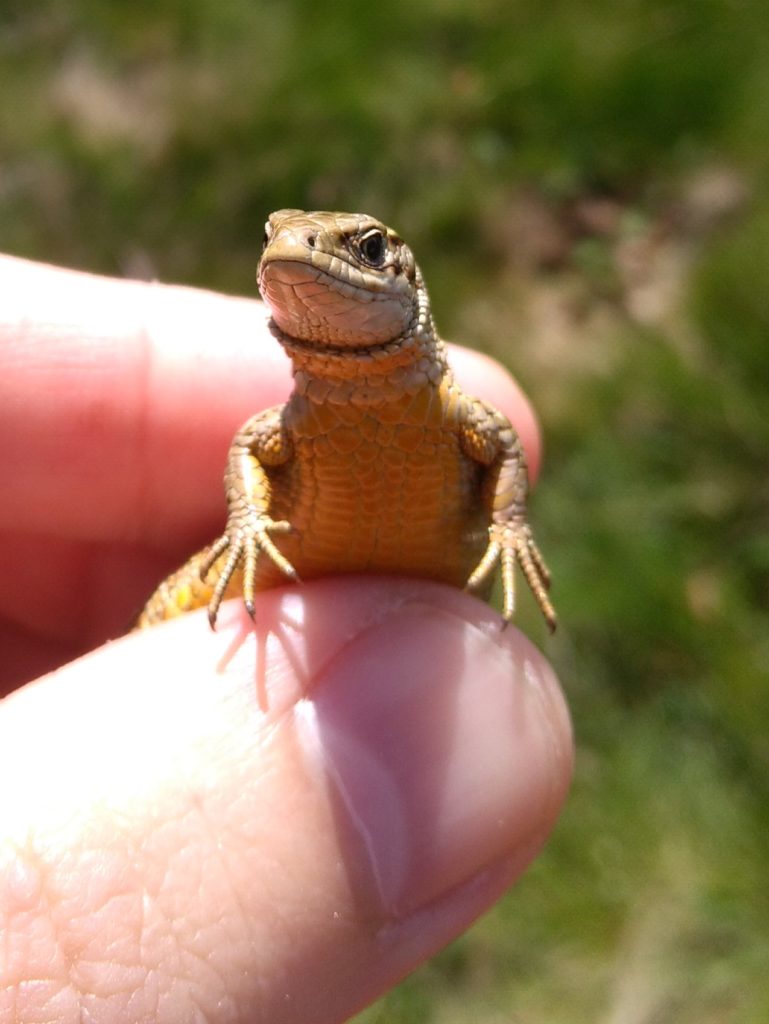
Study of wild populations of the common lizard
Since the 90s, a common lizard (Zootoca vivipara) population is monitored yearly on the Mont-Lozère (France). A pedigree of the population is reconstructed using micro-satellites (e.g. to infer paternities). I am continuing this survey initiated by Jean Clobert, with a focus on the genetics of adaptation of the population.
The general aim is to use quantitative genetics, evolutionary ecology and population genomics to better study the selective pressures exerted on the population (including due to climate change) and its ability to respond, either through genetic adaptation or phenotypic plasticity.
Current projects tackle the evolutionary ecology and genetics of phenology (during the PhD project of Théo Bodineau), growth (a Master project of Anaïs Aragon) and dispersal (during a Master project of Léa Koch), as well as the funded TIPEX and EvoGenArch projects described below. Léa is now doing a PhD, working on the link between life history, senescence and climate warming in the context of the TIPEX project.
This survey is founded by CNRS Ecology & Environment SEE-Life program for long-term monitoring of wild species, the TIPEX ANR project and the EvoGenArch ERC project (see below for more information about those projects). The survey has a dedicated website.
Methodological developments in evolutionary genetics
I am also interested in developing statistical methods that are more efficient and more theoretically justified, especially in the field of evolutionary (quantitative and population) genetics.
In the field of quantitative genetics, I am working on developing methods based on non-linear quantitative genetics to study non-Gaussian traits (see the QGglmm package, in collaboration with Michael Morrissey, Holger Schielzeth and Shinichi Nakagawa) or reaction norms for phenotypic plasticity (see the Reacnorm package, in collaboration with Luis-Miguel Chevin). I also work on between-population quantitative genetics methods during the PhD project of Isabela de O in at University of Lausanne, in collaboration with Jérôme Goudet and Oscar Gaggiotti. We develop better tools to account for population structure when testing for local adaptation in the context of e.g. common garden experiments.
We are also working on developing better methods to study the distribution of the effect sizes of Quantitative Trait Loci during the EvoGenArch ERC project, with Matthieu Pichené.
Funded projects
EvoGenArch ERC project
This project tackles the evolution of the genetic architecture of complex traits (influenced by a large number of loci, named QTLs), narrowly defined as the distribution of the effect sizes of the QTLs. We will develop novel statistical methodology to accurately infer the genetic architecture of traits in the wild, by leveraging the statistical correlation between neighbouring sites in the genome, or linkage disequilibrium. Using the power of a new linked-read sequencing (haplotagging) to obtain information on recombination, we will apply this novel methodology to study the link between the genetic architecture of the traits, and the ‘evolutionary regime’, i.e. characteristics of selective and neutral factors. First, we will perform an in-depth study of the link between selection and genetic architecture on our wild population of common lizards. Second, we will apply this method to analogous traits across more than 20 species to infer their genetic architecture and use knowledge about the evolutionary regime and phylogenetic context, to assess the influence of those components on the variation in genetic architecture. As less formal presentation of the project has been published here.
Matthieu Pichené has started a post-doc working on the development of the new statistical method. Mélanie Januario will work on the link-read haplotagging sequencing (and many other aspects of the project, including field work and data management), with the help of Pascaline Chifflet-Belle et Élise Gay. Tanya Karagyozova is our project manager.
TIPEX ANR project
This is a consortium project, led by Jean-François Le Galliard (iEES, Paris), in collaboration with Sandrine Meylan (iEES, Paris), Julien Cote (CRBE, Toulouse), Jean Clobert (SETE, Moulis) and Olivier Lourdais (CEBC, Chizé), to study the tippoing point in the acceleration of the life history due to climate warming leading to population collapse in the common lizard. In the context of this project, Léa Koch started a PhD to work on the link between life history, senescence and climate warming in our long-term monitored population.
